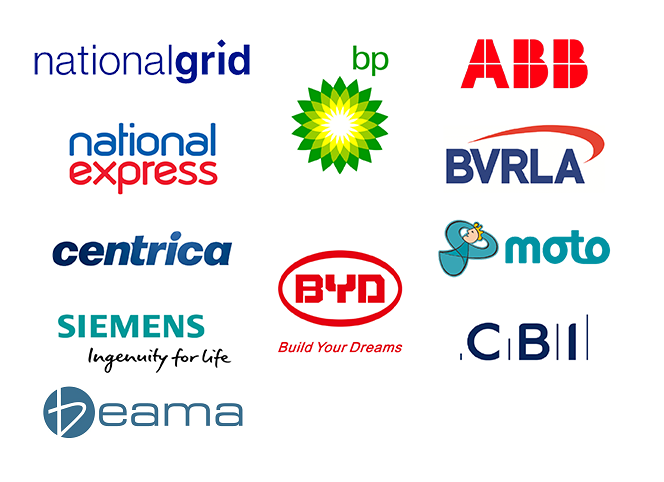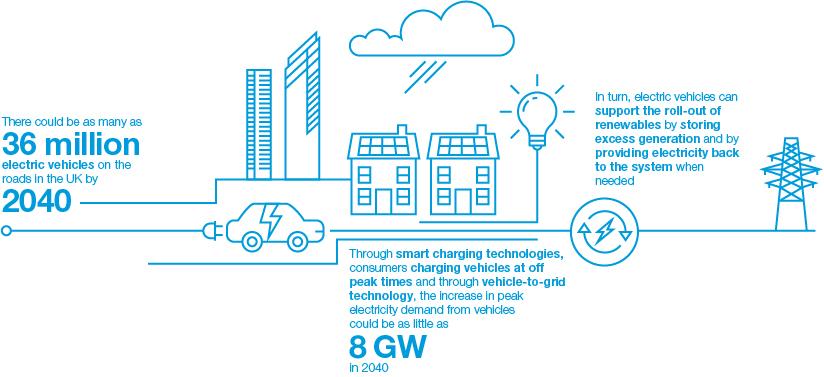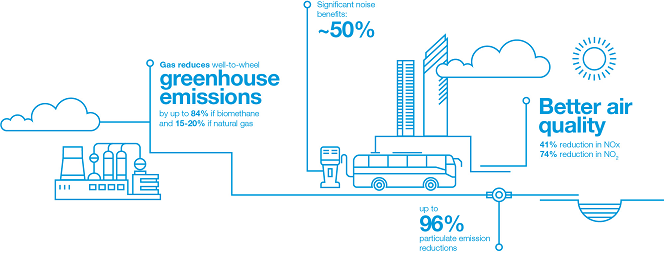Reducing harmful emissions and improving health
Climate change is one of mankind’s greatest challenges. The UK needs to reduce carbon emissions in all sectors; particularly in transport which is now reported as the highest emitter of greenhouse gases.
Air quality and its impact on the health of the population, particularly in urban environments and from diesel emissions, is a major concern. The Royal College of Physicians estimates 40,000 deaths per year are attributable to exposure to outdoor air pollution. We need to work together and take action now to reduce harmful emissions in transport.
Huge changes are needed in the energy system and in transport infrastructure to deal with these challenges. With our capabilities across electricity and gas, our infrastructure and our insights, we are uniquely positioned to use our networks to facilitate and drive the successful transition to cleaner transport. This is what we are doing…
Successfully integrating millions of electric vehicles
By 2040 there could be as many as 36 million electric vehicles on the roads in the UK, so we’re working on the following priority areas:
- We’re exploring how to support a network of transmission-connected ultra-rapid chargers at key strategic locations e.g. motorway services.
- They are crucial for ‘range-anxiety’ and journey planning, enabling the electric vehicle (EV) market to expand quickly and successfully.
-
We recently commissioned a review of existing research into this topic which confirmed that consumers would feel more comfortable purchasing an EV knowing they had access to a rapid charging network. This review also highlighted that reduced charging times are the one charging infrastructure improvement that EV users most desire. The full report is available here.
The UK Government, through its Industrial Strategy and Road to Zero Strategy, laid down a mission to put the UK at the forefront of the design and manufacturing of zero emission vehicles. The aspiration is for all new cars and vans to be effectively zero emission by 2040. The benefits of cleaner road transport include improved air quality, reduced greenhouse gas emissions and new economic opportunities for the UK. It is likely that a combination of vehicle efficiency, hybridisation, electrification and other technologies including biofuels and hydrogen may provide a compelling low-carbon transport offer for consumers.
As an industry group, we are working jointly to develop infrastructure solutions to help facilitate a smooth and efficient consumer transition for those who wish to purchase electric vehicles. In the UK, around 38% of consumers considering a new car purchase would think about buying an electric car, yet only around 2% of new car sales are currently ultra-low emission. More than a third of households in England do not have access to off-street parking for at home charging, and this proportion increases in urban areas[1]. Concerns about range and queuing anxiety as well as the charging experience are holding individuals and businesses back from purchasing electric vehicles and adapting their business models.
An ultra-rapid charging network would be one of the most convenient and cost-efficient solutions to overcoming consumer concerns. Spanning the strategic road network, city forecourts and fleet hubs, ultra-rapid chargers[2] would provide drivers with the ability to make out of pattern and long distance journeys and to charge their vehicle in less than 10 minutes. This would complement home, workplace and destination charging (such as at retail sites and leisure facilities) and provide a solution for those unable to charge at home, drivers on the move, and fleet and bus operators looking to maximise vehicle utilisation.
We welcome the continued support that the government is providing on ultra-rapid charging technologies[1]. Focused innovation support and demonstrators across the value chain, including battery technologies, vehicles, charging and power supply are now essential to ensure that the projections for electric vehicle uptake can be met. We ask that government works with us to set out a vision to significantly improve ultra-fast charging technology and ultra-rapid charging infrastructure. This should enable consumer acceptance, equality of access to consumers across the UK and efficient delivery of the enabling utility infrastructure.
The UK will only achieve large scale uptake of electric vehicles if there is a widespread network of vehicle charging points, which are easily accessible, and can charge a vehicle at a speed appropriate to the time spent at a given location. As an industry group, we are committed to playing our part in facilitating the transition to zero emission transport, and to working with Government to help deliver the confidence needed to shape the market.

[1] “Road to Zero”, HM Government and Industrial Strategy (July 2017). Available at https://www.gov.uk/government/publications/reducing-emissions-from-road-transport-road-to-zero-strategy
[2] Charging at above 150kW and up to 350kW
[1] “Road to Zero” – see footnote 1.
- We’re driving the need to manage when electric vehicles are charged. ‘Smart charging’ will smooth demand on the electricity system.
- It will ensure that increases at peak times remain manageable and it will also make best-use of existing generation capacity.
- When plugged-in, EVs could provide flexibility to help balance the supply and demand of electricity, potentially reducing costs for consumers.
- This could also include using EVs to supply electricity from their batteries back to the grid, known as ‘vehicle-to-grid’ (V2G).

Making a rapid impact on harmful emissions with gas vehicles
There are significant gains to be made across a range of harmful emissions, by converting freight from diesel to gas; even if this is an interim step towards zero emission freight vehicles. So the priorities we are working on are:
- Making compressed natural gas (CNG) more available via our network will make it easier for companies to convert freight vehicles from diesel.
- So we’re working with a range of organisations to identify strategic gas filling locations and agree how to make this happen; as well as exploring the volume potential for Biomethane and BioSNG.
- Project CLoCC, ‘Customer Low Cost Connections’, is significantly cutting the time and cost to connect to our gas transmission network.
- If you have a connection you want to discuss, let’s talk; or visit the Project CloCC website for more information.
- We operate the only UK LNG tanker loading facility, located at our Isle of Grain site.
- It allows operators to load LNG and transport it to filling stations, or to industrial/commercial customers for use with their fleet.

Hydrogen gas also has potential as a zero-emission fuel for vehicles. There is a significant link between hydrogen vehicles and the easy availability of hydrogen supply. Therefore, if we start to see the development of a nationwide hydrogen economy, we will consider what investments will be needed to assist likely supply and demand changes on the national transmission system, and the impact of a large number of new hydrogen fuelling stations.
Find out more about connecting to our electricity and gas transmission networks: